Design a new Monoblock case, the size is 176mm(W) x 278mm(D) x 108mm(H).



I think the OP is entitles to show hes bid for a case - no?
//
//
The design of the amplifier enclosure is also an essential part of the project. A great amplifier should not only deliver an excellent auditory experience but also provide a visually stunning aesthetic!Please keep this nice thread free of enclosures design, thank you so much!
Whats not true with "A great amplifier should not only deliver an excellent auditory experience but also provide a visually stunning aesthetic!" ?
//
//
???sorry, I didn't see that the OP wrote a post with an enclosure
I thinked that flmhhh is someone else, mean someone else post eclosure design in your thread, understand now? : )
Due to lifespan management, the factory recommends replacing the EPC2001C with the EPC2204. The new EPC2204 offers lower Rds(on), Qg, Qgs, and Qoss, (please referring to the attached figure for more detail) resulting in faster switching and reduced switching losses (expecting 🙂 ).
With these improved parameters, the new FET opens up more design possibilities:
Thanks!

With these improved parameters, the new FET opens up more design possibilities:
- Maintain the same power supply voltage and switching frequency, reducing idle power consumption by approximately 20%.
- Maintain the same idle power and switching frequency, increasing the power supply voltage by 20% to 58V, which raises the maximum RMS output power to 150W at an 8-ohm load.
- Maintain the same power supply voltage and idle power, increasing the switching frequency to 3.8MHz.
Thanks!
I recently acquired a 24-bit audio analyzer and used it to measure the headphone amplifier. Unfortunately, the AMP module is currently borrowed by a friend. I will share the measurement results once it is returned.
Here is a quick summary, please see the detail in the attached file if you interested.

Here is a quick summary, please see the detail in the attached file if you interested.
- A-weight background noise is about 17uV.
- background noise is about 23uV.
- the average THD+N is around 0.002x%-0.003x%.
Attachments
-
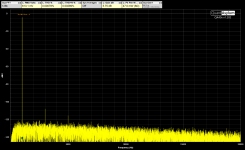 distortion_1k.png325.2 KB · Views: 79
distortion_1k.png325.2 KB · Views: 79 -
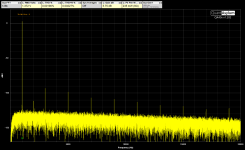 distortion_1k_n3dB.png325.5 KB · Views: 79
distortion_1k_n3dB.png325.5 KB · Views: 79 -
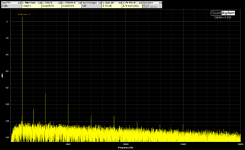 distortion_1k_0dB.png325.5 KB · Views: 73
distortion_1k_0dB.png325.5 KB · Views: 73 -
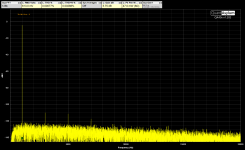 distortion_1k_n10dB.png324.6 KB · Views: 66
distortion_1k_n10dB.png324.6 KB · Views: 66 -
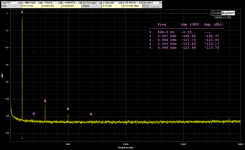 distortion_1k_n10dB_AVG.png306 KB · Views: 69
distortion_1k_n10dB_AVG.png306 KB · Views: 69 -
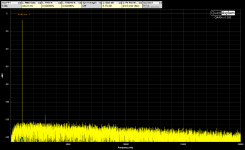 distortion_1k_n13dB.png327.4 KB · Views: 71
distortion_1k_n13dB.png327.4 KB · Views: 71 -
 distortion_2k_n13dB.png328.4 KB · Views: 67
distortion_2k_n13dB.png328.4 KB · Views: 67 -
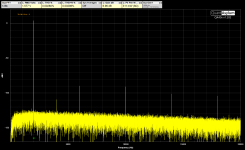 distortion_2k_n3dB.png326.5 KB · Views: 67
distortion_2k_n3dB.png326.5 KB · Views: 67 -
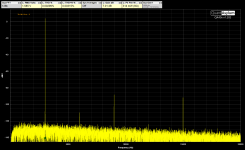 distortion_3k_n3dB.png324.9 KB · Views: 64
distortion_3k_n3dB.png324.9 KB · Views: 64 -
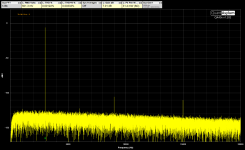 distortion_3k_n13dB.png327.8 KB · Views: 70
distortion_3k_n13dB.png327.8 KB · Views: 70 -
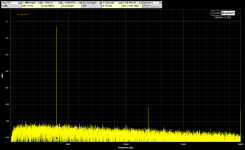 distortion_4k_n13dB.png322.6 KB · Views: 59
distortion_4k_n13dB.png322.6 KB · Views: 59 -
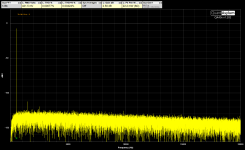 distortion_500_n10dB.png328.2 KB · Views: 58
distortion_500_n10dB.png328.2 KB · Views: 58 -
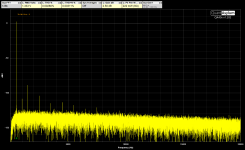 distortion_500_0dB.png334.5 KB · Views: 68
distortion_500_0dB.png334.5 KB · Views: 68 -
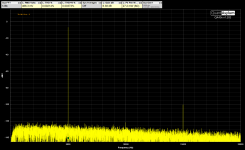 distortion_5k_n13dB.png321.2 KB · Views: 61
distortion_5k_n13dB.png321.2 KB · Views: 61 -
 IMD_n20dB.png325.5 KB · Views: 65
IMD_n20dB.png325.5 KB · Views: 65 -
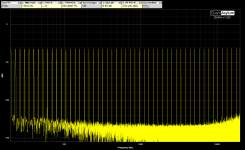 multitone_n20dB.png331.9 KB · Views: 64
multitone_n20dB.png331.9 KB · Views: 64 -
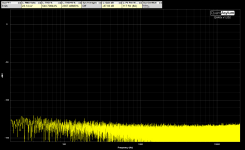 noise_bg.png291.7 KB · Views: 62
noise_bg.png291.7 KB · Views: 62 -
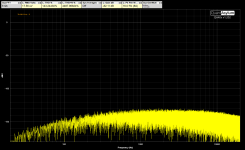 noise_bg_A.png325 KB · Views: 57
noise_bg_A.png325 KB · Views: 57 -
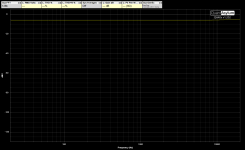 response_open.png192.7 KB · Views: 75
response_open.png192.7 KB · Views: 75
These measurement results are from the headphone amplifier as I said. The AMP module should yield similar results since it utilizes the exact same sigma-delta modulation.
Enclosure design is half the battle to keep the unit from going up in smoke. Enjoying the build thread.
- Home
- Amplifiers
- Class D
- The Journey of DIY No-Feedback Class D Amplifier (1) Subtitle: The Motivation and Story Behind It
